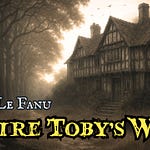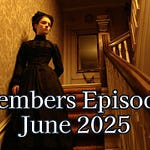Ernst Theodor Amadeus Hoffman
E T A Hoffman, as he is known, was born in 1776 in Konigsberg, East Prussia, Germany and died in Berlin, Germany of syphilis, which was extremely prevalent. He was only 46.
He was a romantic author of fantasy and Gothic horror as well as being a composer, music critic and artist. He wrote the Nutcracker and the Mouse King which was the basis of Tchaikovsky’s ballet The Nutcracker and Offenbach’s opera The Tales of Hoffman is based on E T A Hoffman’s works.
His parents separated when he was 12. He remained with his mother and aunts. He was very fond of his aunts.
He started work in 1796 for his uncle as a clerk. He visited Dresden and was impressed by the paintings in the gallery there. He lived and worked for his uncle in Berlin from 1798. From 1800 he lived and worked away from home and took to a dissolute lifestyle. He was promoted and got a job in Warsaw in 1804. He was happy in Warsaw, but went back to Berlin which was occupied by Napoleon’s armies. In 1808 he got a job in Bamburg as a theatre manager.
He was given to falling in love, once with a young music student Julia Marc and another time with a married woman 10 years old who had six children. He also appears to had challenges with alcohol most of his adult life.
The Sandman
The Sandman is Hoffman’s best loved and most influential story. It was a favourite of Sigmund Freud and we might see some influence of this story on Tim Burton’s films.
M. Grant Kellermeyer on his great ghost story site says that the Sandman exists to sow suffering and everything he touches. Coppelius as the Sandman wants to throw hot coals and sparks into the eyes, not the soporific sand.
The story begins with a series of letters. This was a common convention and later Hoffman steps in as the author and discusses different ways he had thought of beginning the story. One can’t help think that he was amusing himself with this story as he seems to be satirising certain classes of people, notably Romantics. The Romantic Movement grew up towards the end of the 18th Century and lasted into the 19th Century, dated to end at the crowning of Queen Victoria in England in 1837.
I think the first letter from Nathanael setting out his horrified fantasies about the Sandman Coppelius is to establish him as a credulous and impressionable boy given to neurotic terrors. He seems incapable of distinguishing truth from his fantasies and believes his inward passions rather than objective facts. Again, I think Hoffman is poking fun at Romanticism.
There is some theme of eyes. Coppelius seems to want to steal Nathanael’s eyes, and eyes and optics crop up again and again. When Coppelius and Nathanael’s father are working as alchemists, they seem to be building automata.
Clara’s letter establishes her (a woman) as level headed and logical and not given to fancies. They are at odds in this and I feel that Hoffman is making fun of the brooding romantics who believed that nature should lead over thinking. Clara is endlessly forgiving and devoted to Nathanael despite him not really deserving it as he is moody and unfaithful with a robot and then tries to kill her. In the end, we hear that she has found someone more worthwhile to love and have children with.
Amusingly, when Clara doesn’t love his gloomy poem he calls her a lifeless automaton. The story is filled with little jokes like this.
Nathanael does not believe in free will. Clara does. Nathanael believes that we are controlled by mighty powers greater than ourselves. Clara denies this and says we are fooled by our own fancies if we think this. Ironically, that is what kills Nathanael and drives him mad.
Some translations use Oh! Oh! Oh! for Olympia’s words, but the translation I used uses the original German Ach! Ach! Ach!














Share this post